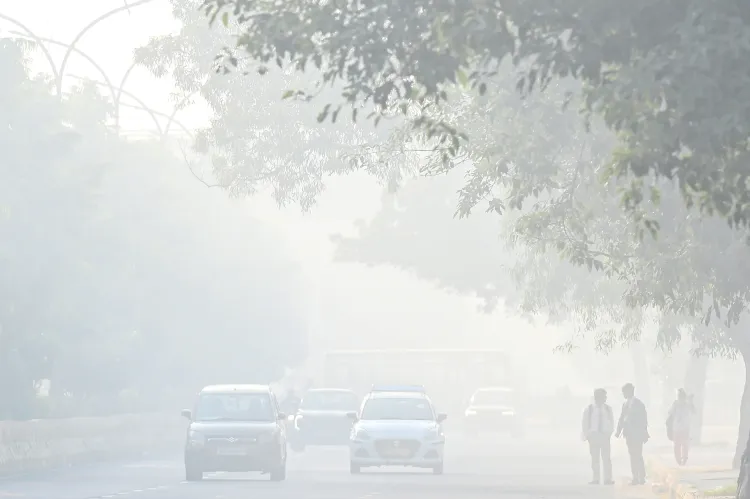Is there no respite from hazardous air in Delhi-NCR as AQI exceeds 400?

Synopsis
Key Takeaways
- The AQI in Delhi-NCR has hit alarming levels, exceeding 400.
- Health risks associated with poor air quality affect all demographics.
- Experts recommend limiting outdoor exposure and wearing masks.
- Weather conditions are unlikely to improve air quality in the near future.
- Government agencies are urged to take stronger action against pollution.
Noida, Nov 18 (NationPress) The air pollution crisis in the Delhi-NCR persists at alarming levels. Data from the Central Pollution Control Board (CPCB) and the Meteorological Department reveal that the Air Quality Index (AQI) has surged past 400 in many cities across the national capital region as of Tuesday, categorizing them as ‘severe’.
This level of air quality is particularly detrimental not only to individuals with asthma, heart ailments, and respiratory diseases but also poses significant health risks to otherwise healthy populations.
The air quality scenario in Ghaziabad and Greater Noida is deteriorating rapidly. Greater Noida has recorded an AQI of 430, marking it as one of the most polluted areas in the vicinity.
Monitoring stations in Ghaziabad have logged AQI values ranging from 404 to 438, which are the worst figures observed this season. Severe pollution is also impacting Noida and Delhi. In Noida, sectors such as Sector 125, Sector 1, and Sector 116 have reported AQI levels between 324 and 402.
In Delhi, regions like Anand Vihar, Bawana, Chandni Chowk, and Alipur have recorded pollution levels from 350 to 426, making it harder for those with pre-existing health issues to breathe.
While a change in weather conditions had raised hopes for relief, the latest updates from the India Meteorological Department (IMD) suggest that no significant changes are on the horizon. Wind speed is not expected to increase, nor is rainfall anticipated.
In the upcoming week, maximum temperatures are projected to hover around 26 degrees Celsius, with minimum temperatures around 11 degrees Celsius, and fog is likely to persist on most days. Experts have indicated that cold and stable winds trap pollutants near the ground, while fog enhances their density, which could lead to even higher AQI readings.
Health professionals are advising residents to limit outdoor activities, wear masks, especially around children and the elderly, and avoid morning and evening strolls when pollution levels peak. Simultaneously, there is increasing pressure on government bodies and local authorities to enforce more stringent measures to tackle the escalating air pollution crisis.









